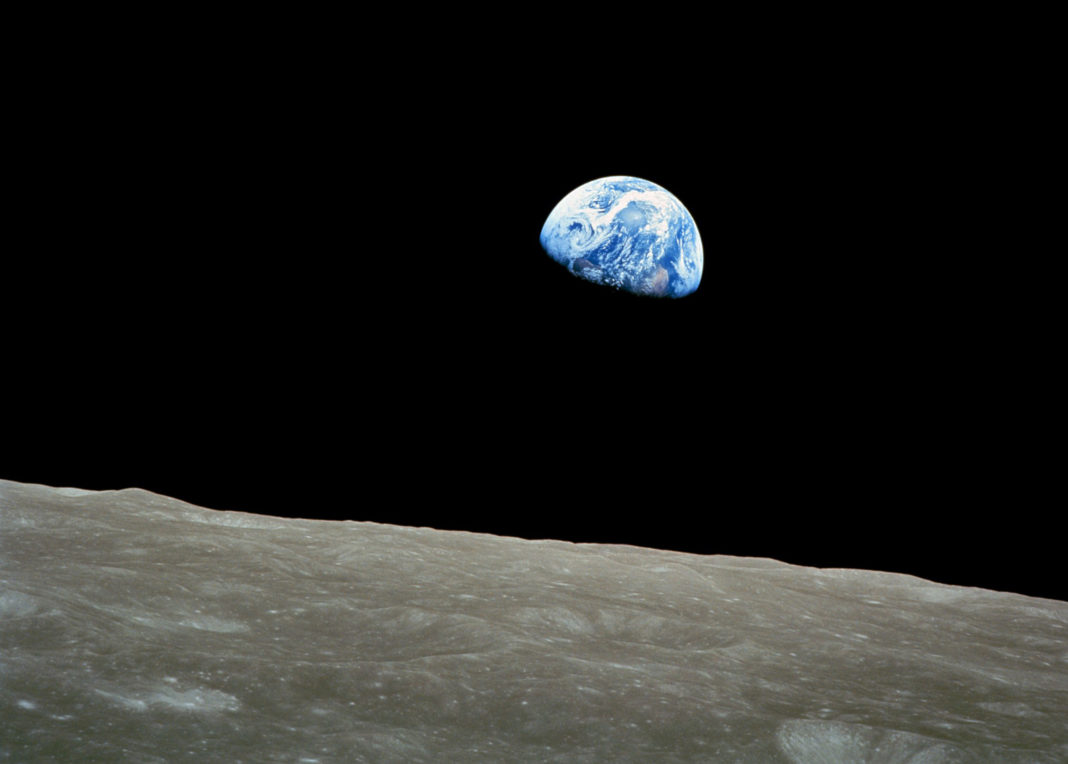UNITED STATES—”In the beginning, God created the heaven and the Earth,” read the steady voice of Major Bill Anders. Half a billion people positioned themselves near televisions, hanging onto every word being broadcast at 8:58 p.m. on December 24, 1968. While the world watched and listened below, Bill Anders, Frank Borman, and James Lovell orbited 70 miles above the Moon’s surface.
This December, the United States celebrated the 50th anniversary of the Apollo 8 mission. Apollo 8 was the first manned spacecraft to reach to Moon, orbit it, and successfully return to Earth. Four days before the Christmas of 1968, the three men climbed into the tiny space capsule attached to the impressive Saturn V rocket at Kennedy Space Center in Florida. Their mission, which was originally not intended to orbit the moon, was expedited as Kennedy was determined to beat the Russians to the moon. Three days later, they would be the first humans in the world to enter lunar orbit. On Christmas Eve, they orbited the Moon a total of 10 times.
It impacted each man in a different way. For hours they watched, glued to the sight of Earth shrinking behind them and the Moon growing steadily larger. “The moon is a different thing to each one of us. I think that each one of us—each one carries his own impression of what he’s seen today. I know my own impression is that it’s a vast, lonely forbidding type existence, great expanse of nothing, that looks rather like clouds and clouds of pumice stone, and it certainly would not appear to be a very inviting place to live or work,” Borman said on Christmas Eve. In turn, Lovell said, “The vast loneliness up here of the moon is awe inspiring and it makes you realize just what you have back there on Earth. The Earth from here is a grand [oasis] to the big vastness of space.”
With minimal rolls of film, the crew knew that their main objective was to take photographs of the moon. But as they saw the Earth loom calmly next to the cratered surface of the moon, Anders figured one photo wouldn’t hurt. This quick snapshot would become one of the most recognized photographs in the world.
“Earthrise” would give the world a perspective unlike anything seen before. With the monotone coloring of the Moon’s surface pressing into the foreground, Earth seems no bigger than a child’s marble. The blue-green hues of Earth radiate below blankets of clouds. The expansiveness of Earth, everything that humans knew and understood, was captured in a single color photograph.
That night, Anders, Lovell, and Borman took turns reading from the Book of Genesis in what became the most viewed broadcast of the time period. “And God called the light day, and the darkness he called night,” Lovell read. In the wake of 1968’s chaos, the three men’s voices served as a beacon of perseverance. Borman continued “And God said, Let the waters under the heaven be gathered together unto one place, and let the dry land appear: and it was so. And God called the dry land Earth; and the gathering together of the waters called he Seas: and God saw that it was good.”
On Christmas morning, as mission control waited anxiously for a sign that Apollo 8 was successfully heading home, Lovell’s voice came through loud and clear, “Roger, please be informed there is a Santa Claus.” The men landed safely in the Pacific Ocean on December 27.
“And from the crew of Apollo 8, we close with good night, good luck, a merry Christmas, and God bless all of you—all of you on the good Earth.”






